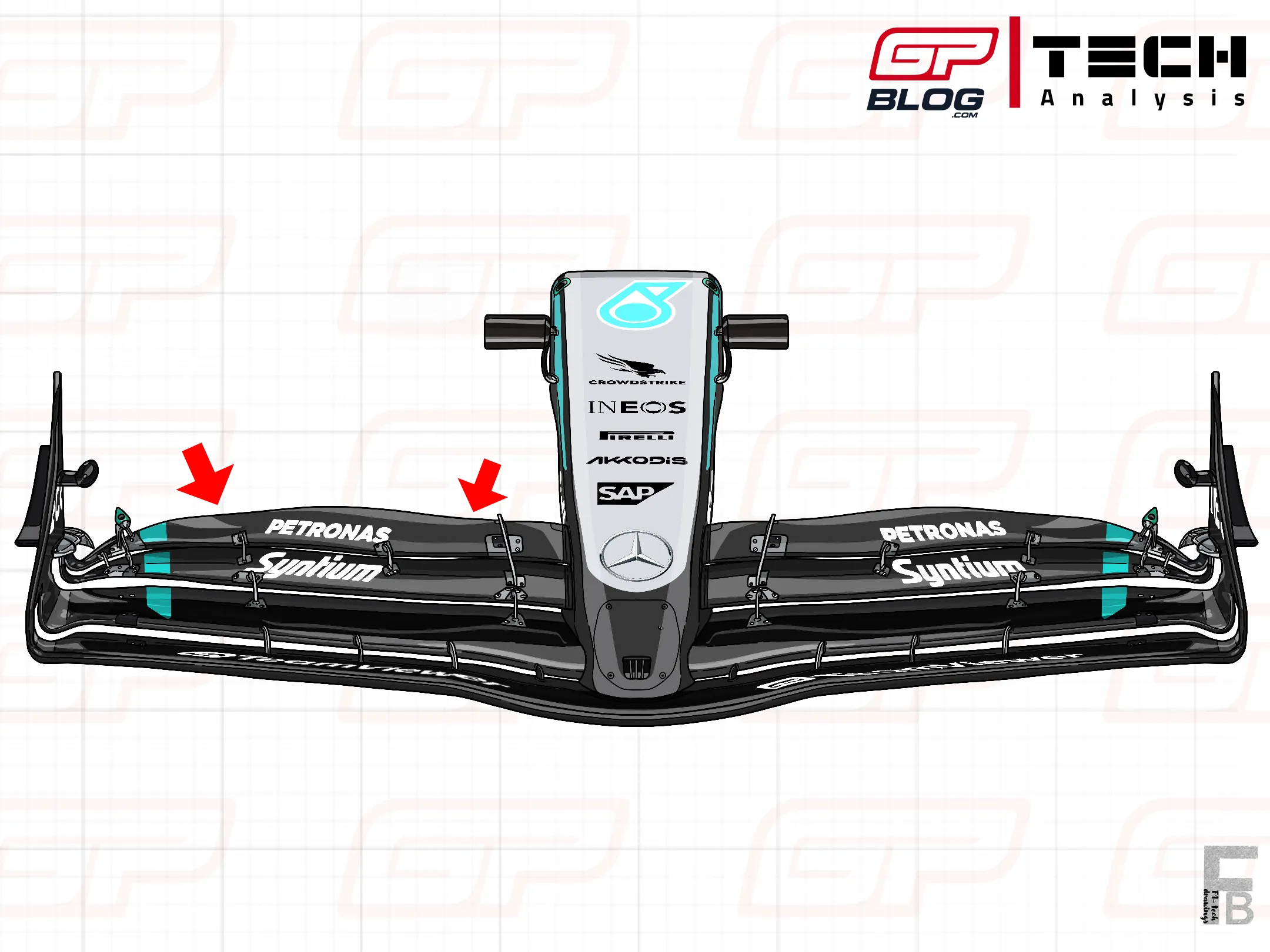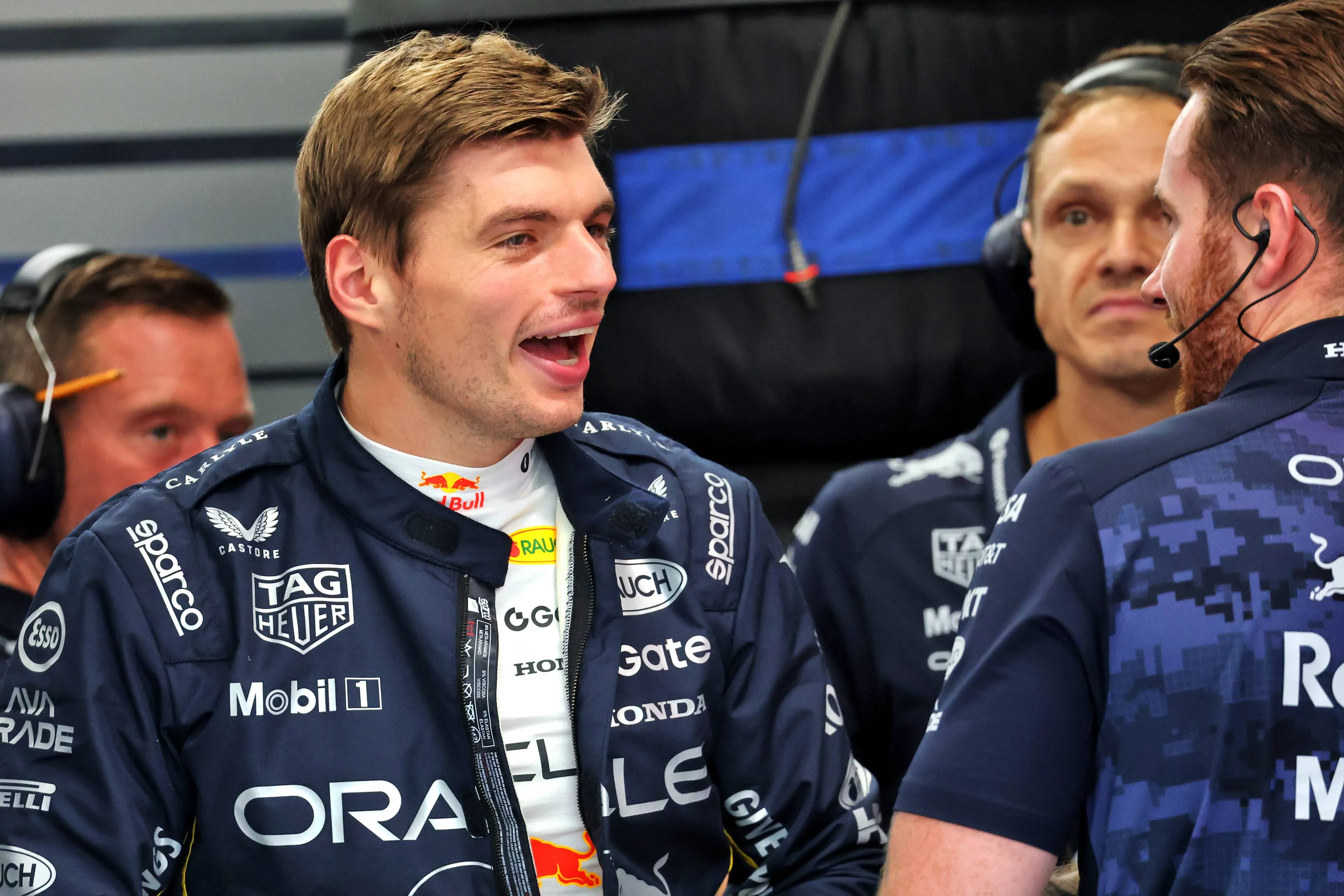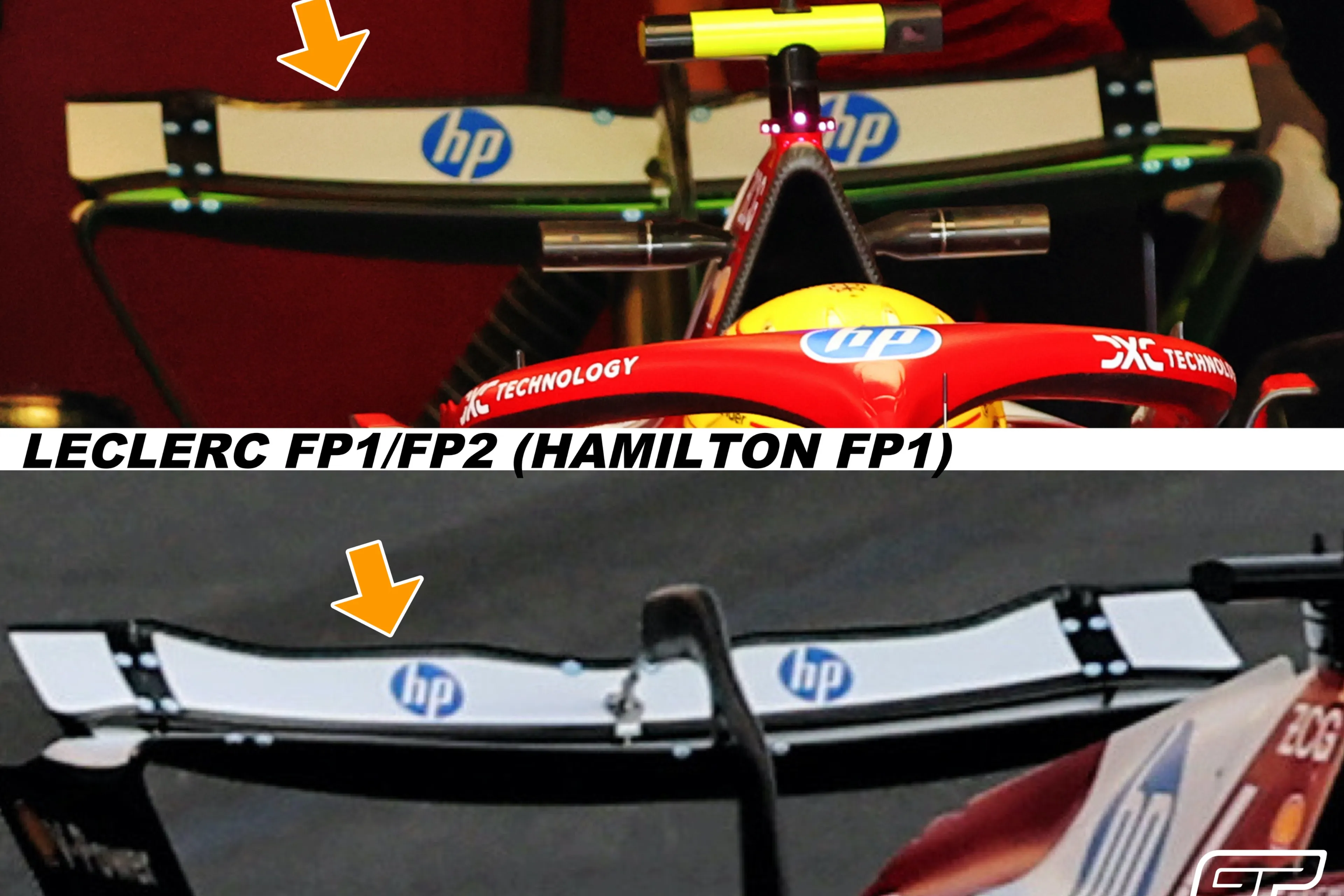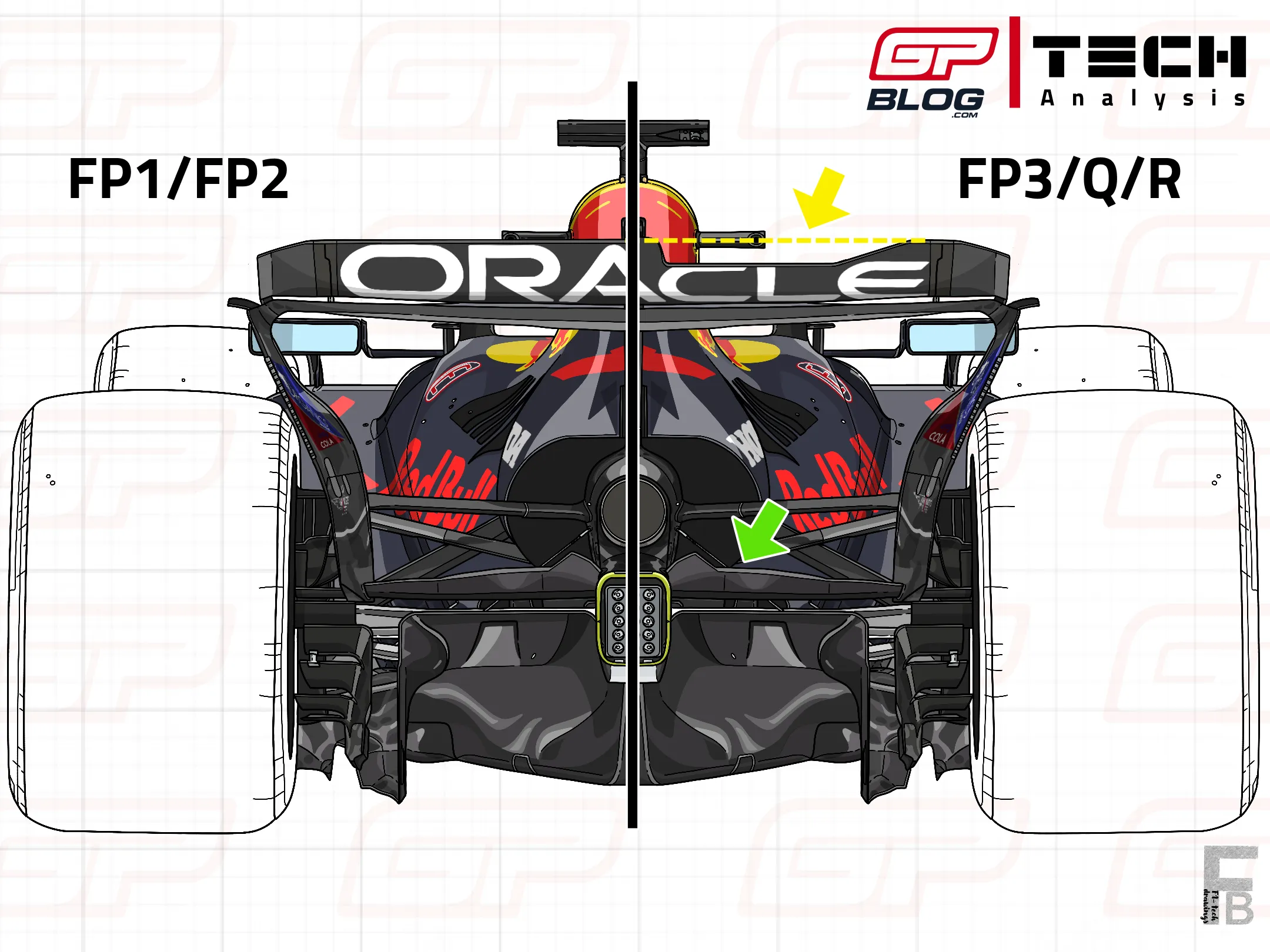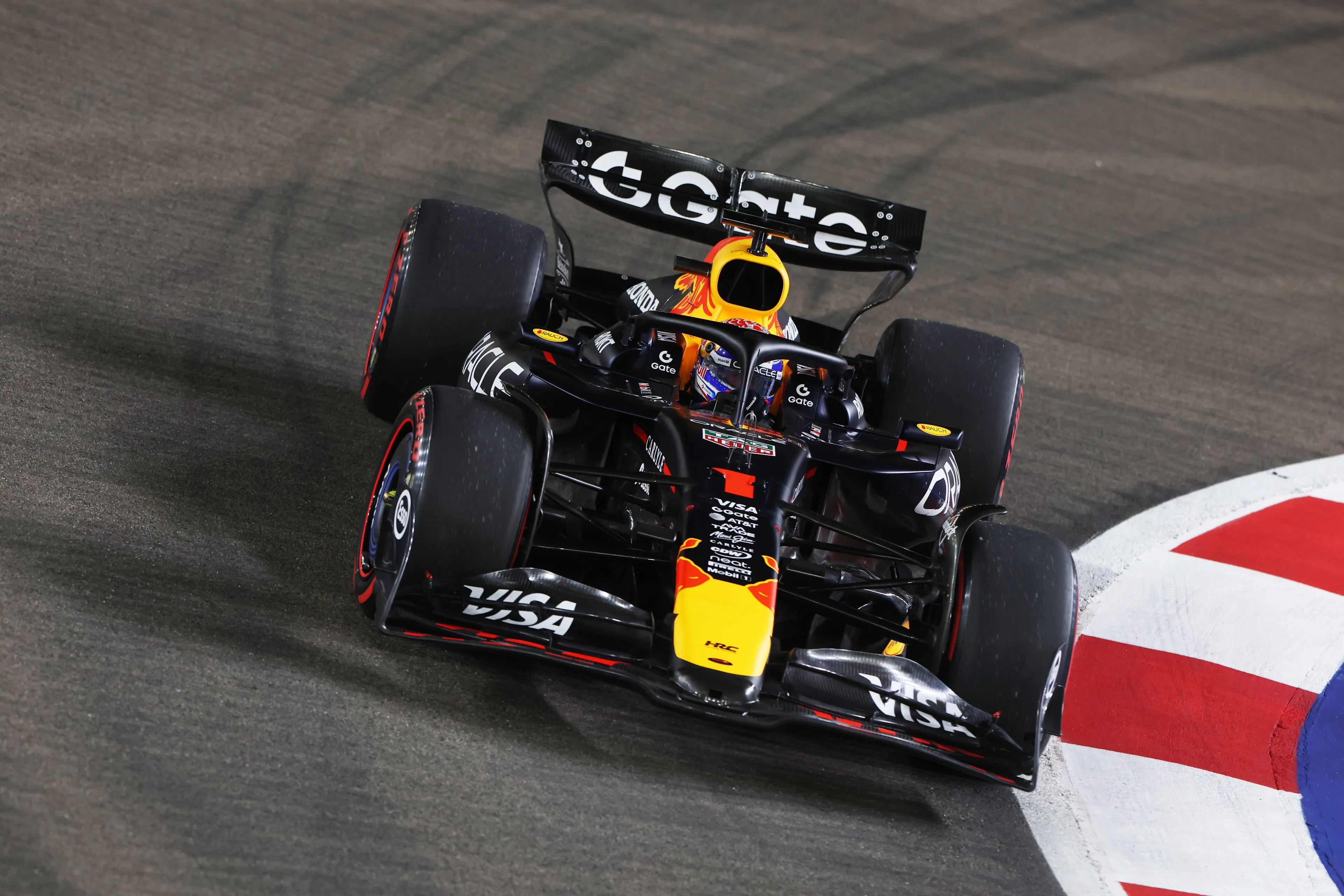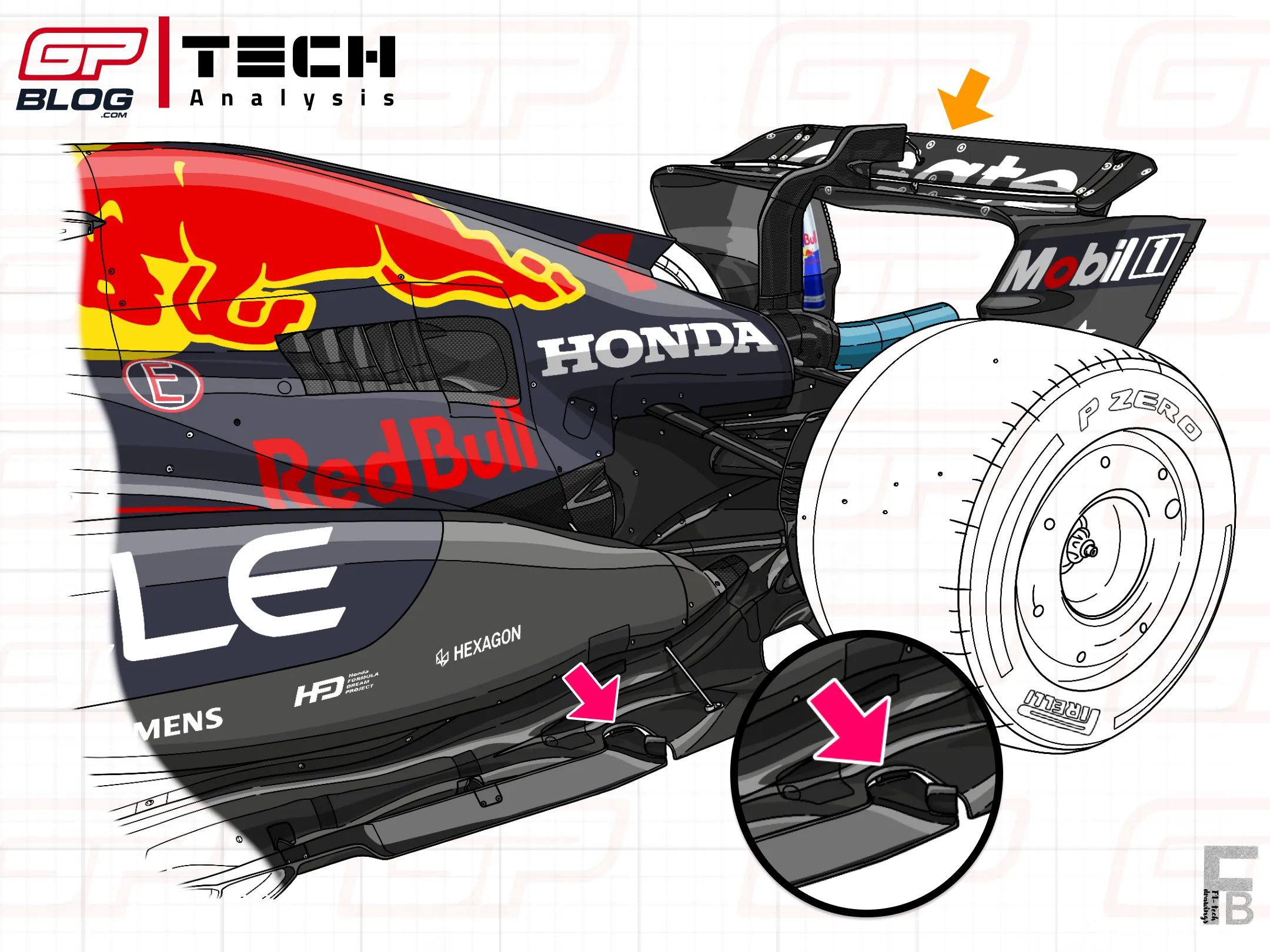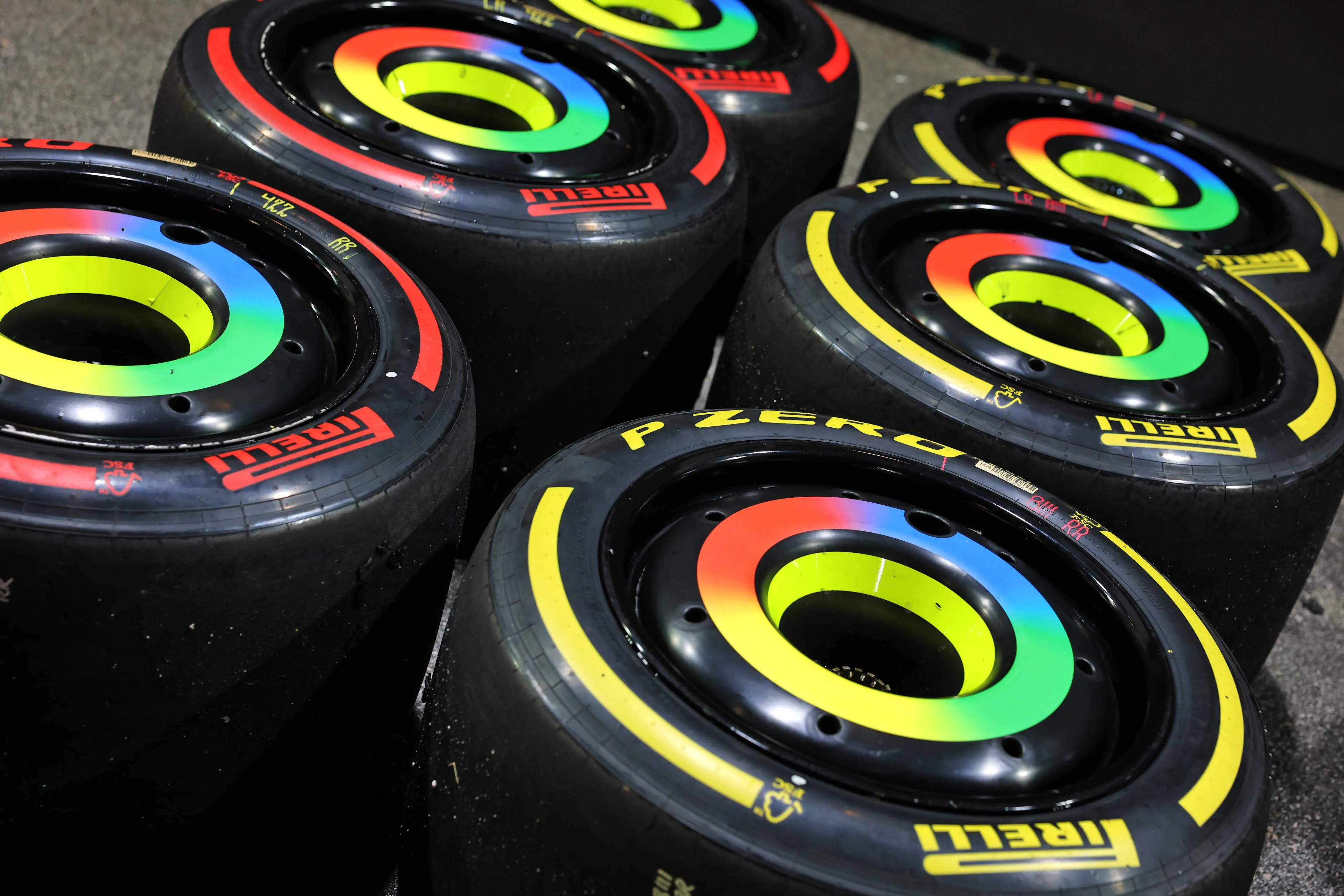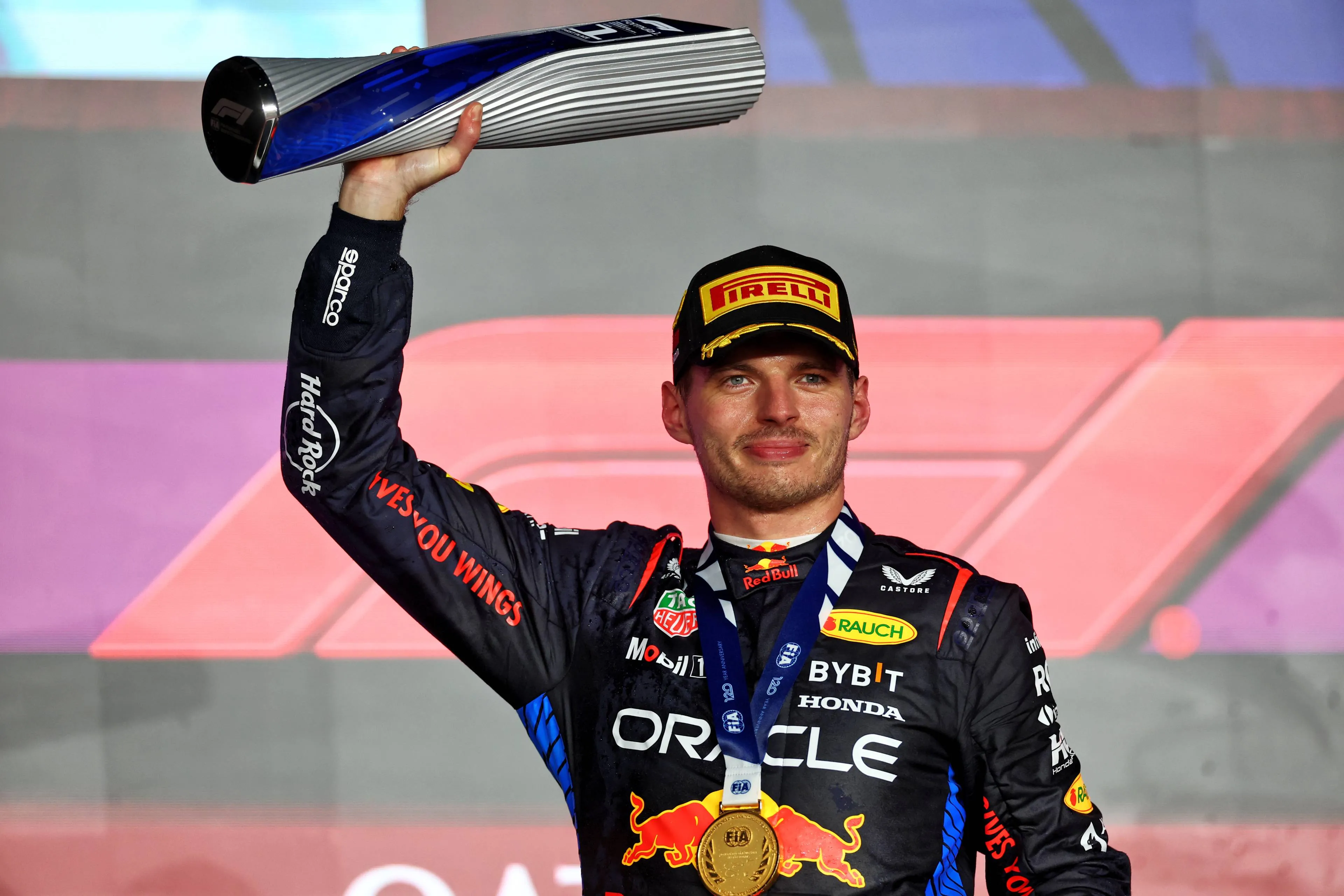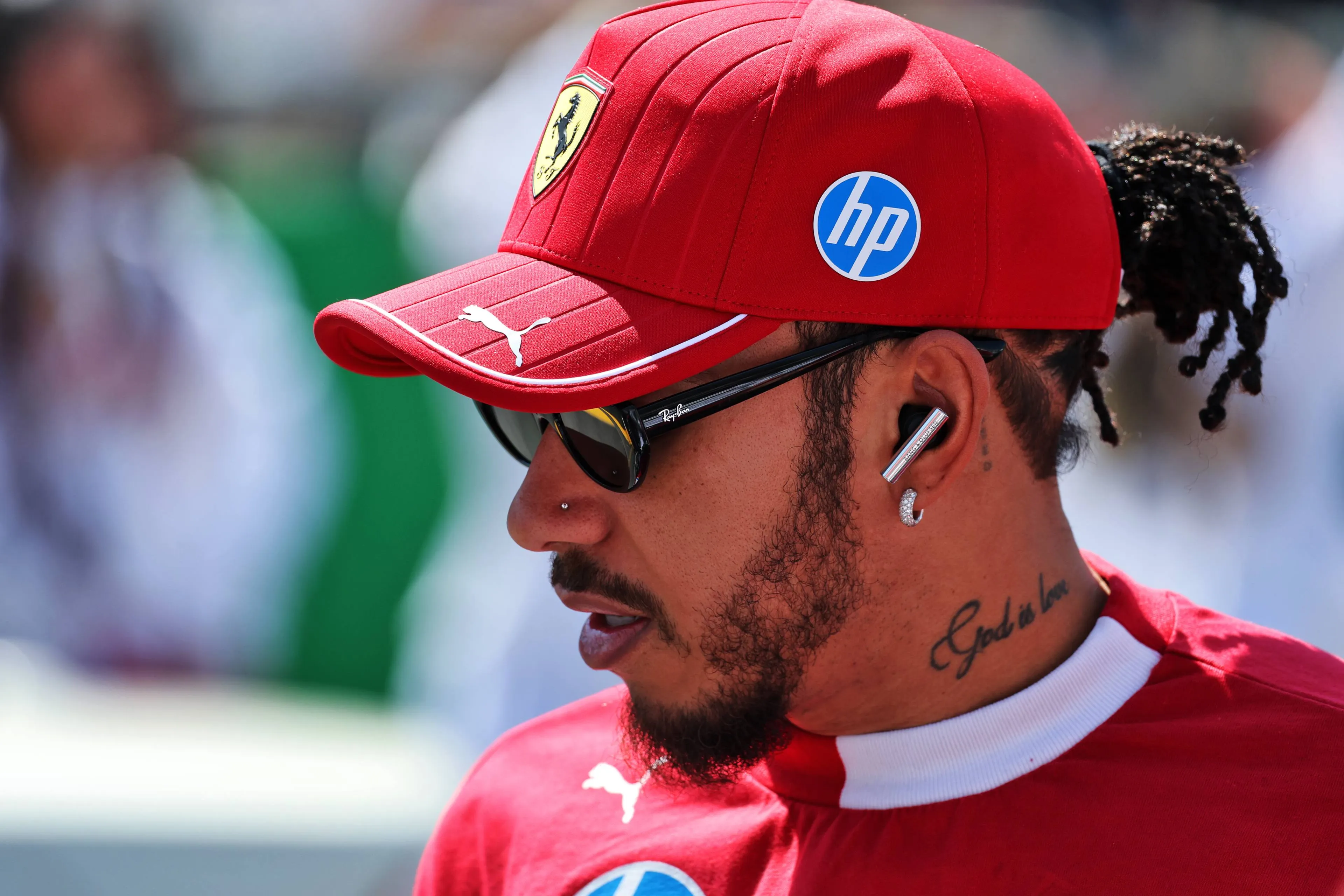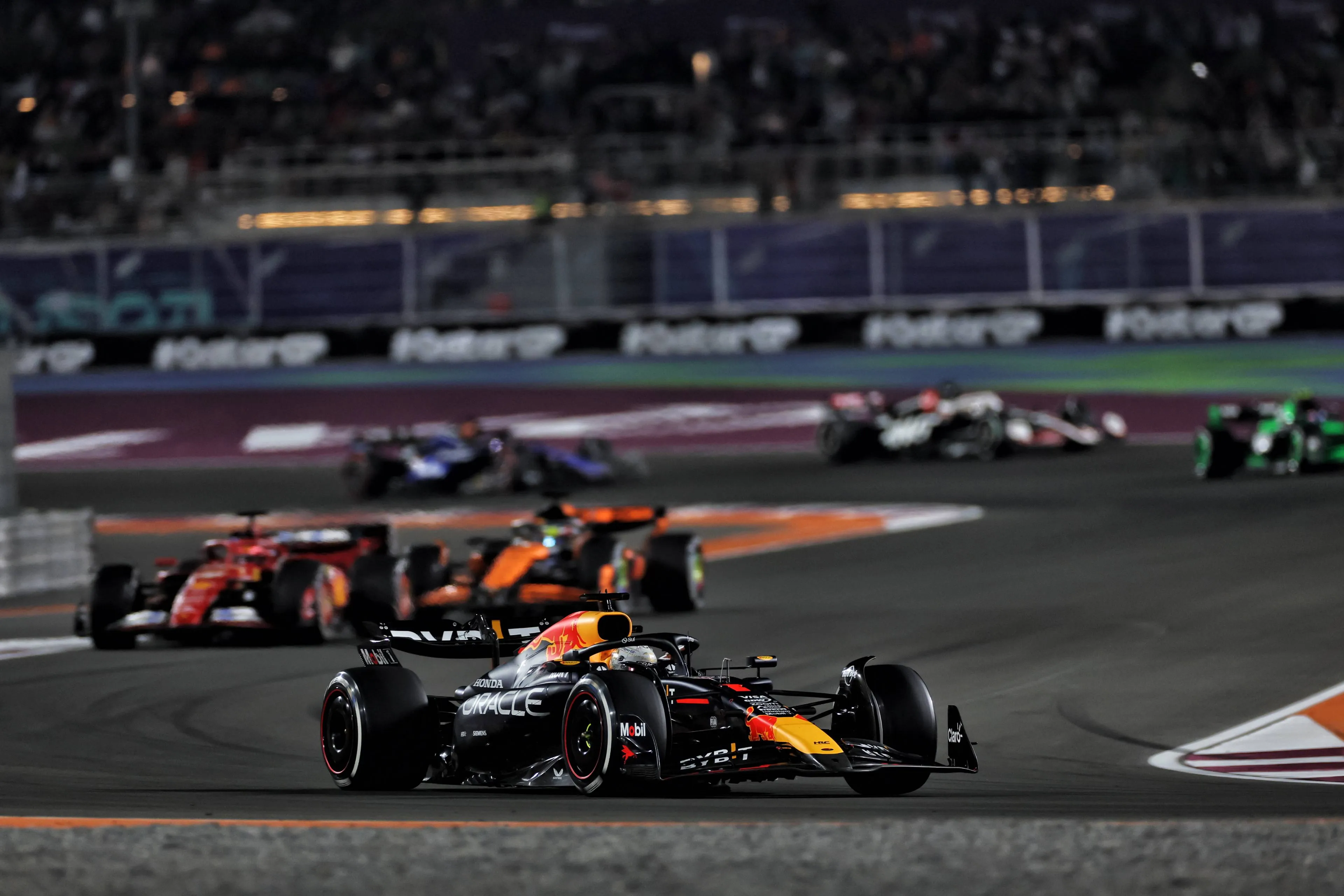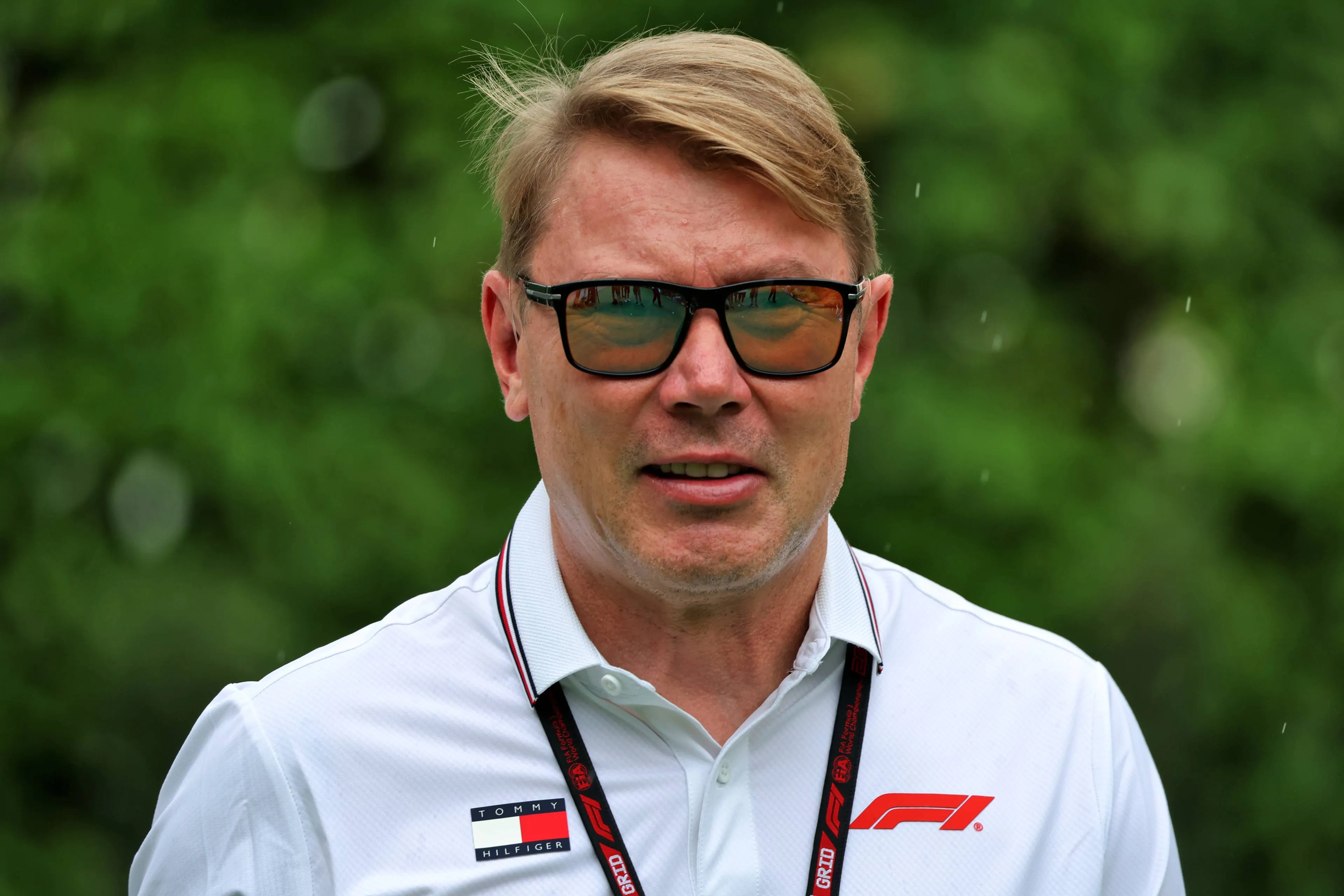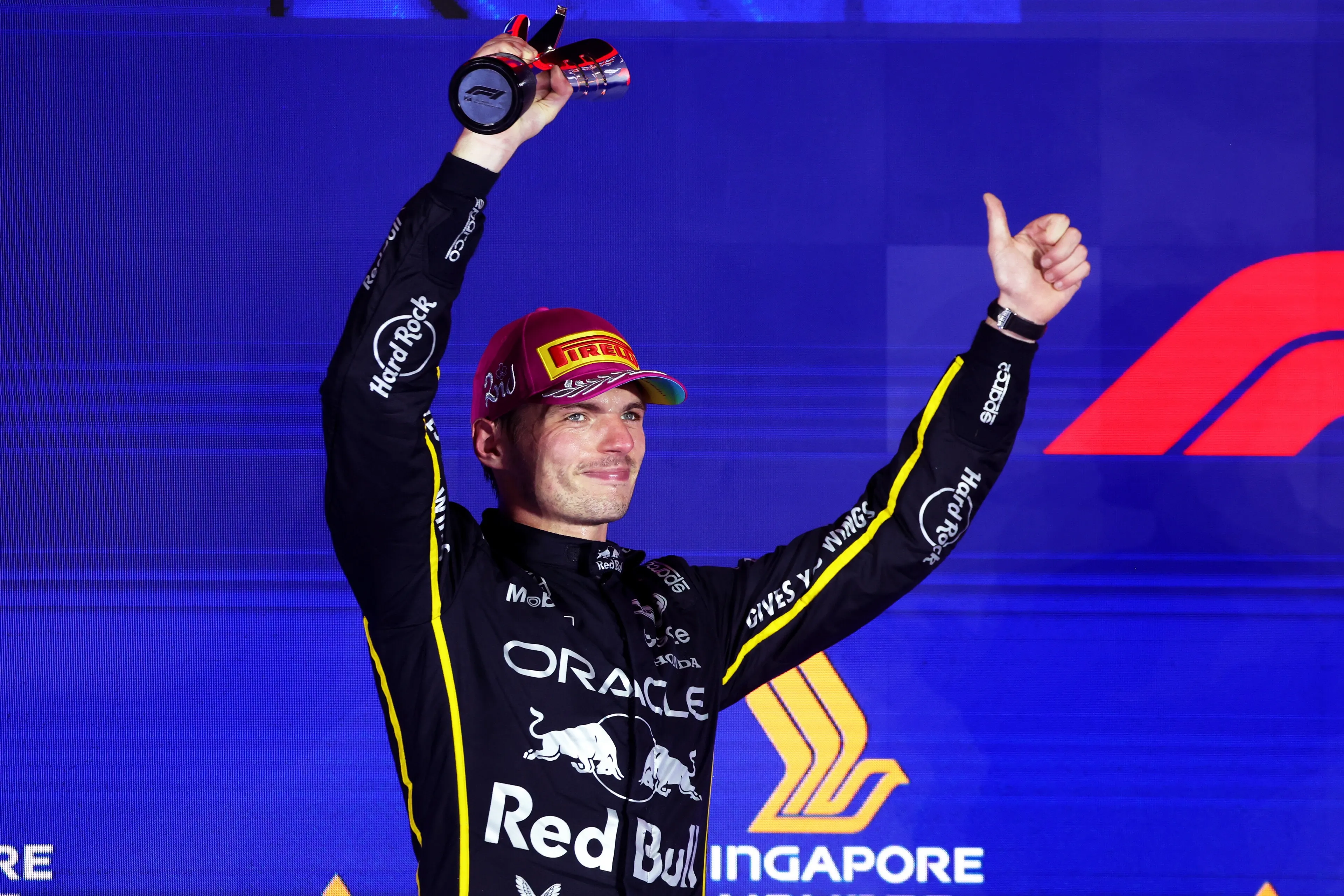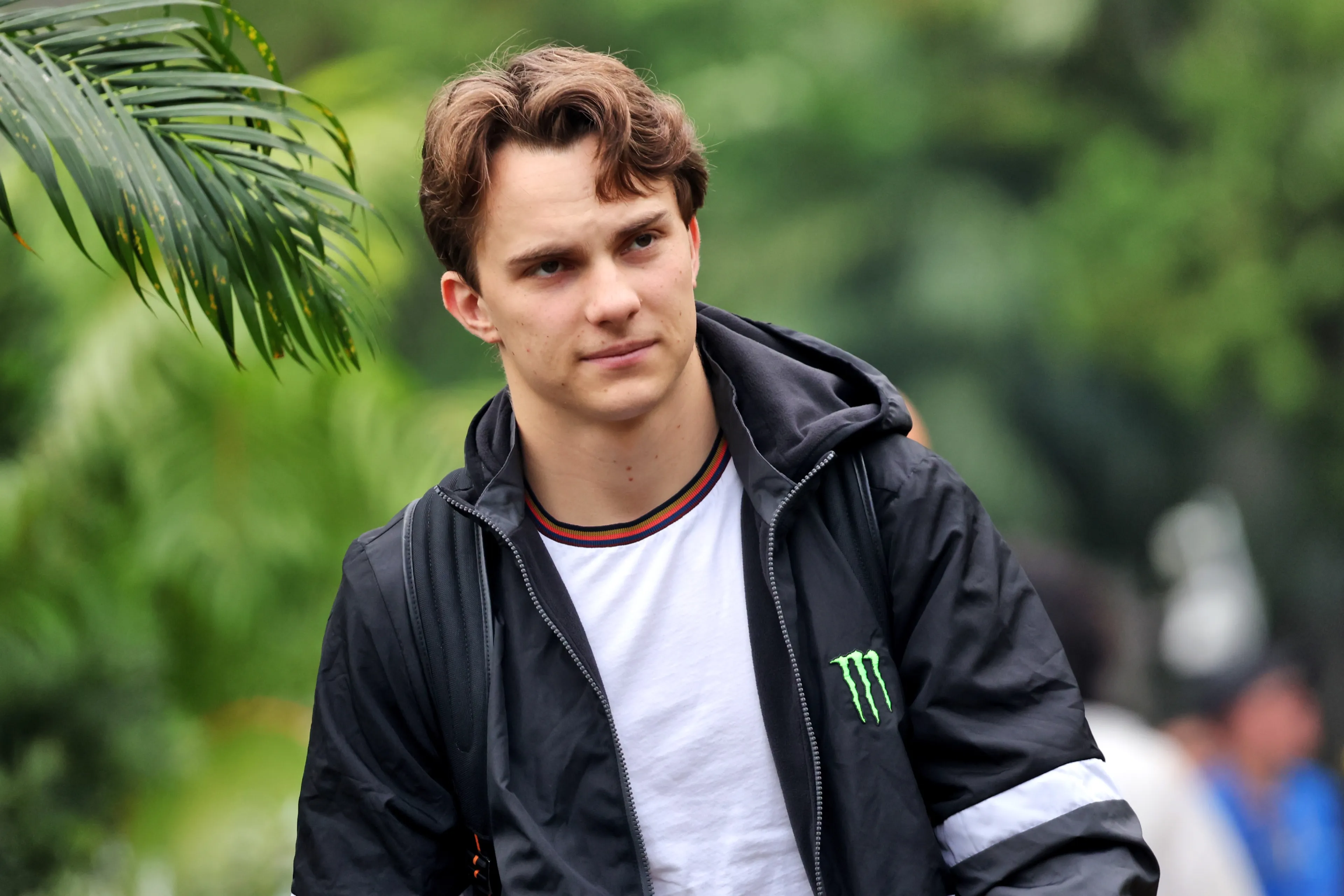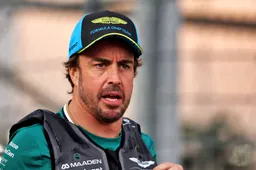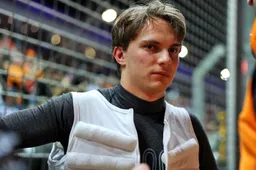F1 Tech | Why the RB21 now has no more major weaknesses
12:36, 10 Oct
Updated: 15:00, 10 Oct
0 Comments
Max Verstappen is now able to fight against McLaren on different layouts.
The updated front wing brought in Singapore allowed Verstappen to stay in front of the two McLaren for the whole weekend, demonstrating that he could be a tough opponent for the Drivers’ Championship.
For the Singapore Grand Prix, Red Bull introduced a new front wing version on Verstappen’s car, while Tsunoda kept using the older spec.
As shown in the drawing below, the new version showed a completely different top flap design (pink arrow), which has a longer chord in the central portion and has a more curvy trend through its whole length compared to the version used by Tsunoda (which also featured a big folder on the trailing edge of the top flap). This mainly aims at generating much more downforce especially at slow speeds, making the front more precise and thus reduce understeer.
Moreover, the spec adopted on Verstappen’s car also featured a different placement of the metal supports between the third and top flap, which are placed more towards the endplate compared to Tsunoda’s version (light blue arrows): even if this could look like a minor change, it underlines that the new wing is probably made of more flexing carbon fibre composites.
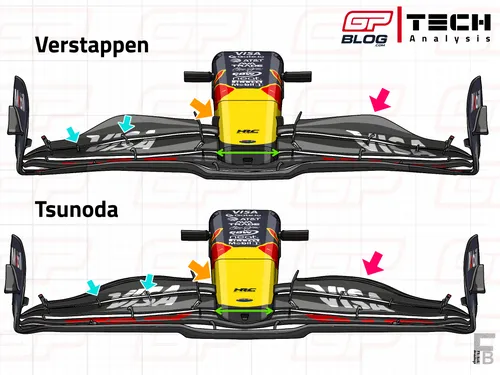
RB21's front wing comparison between Verstappen and Tsunoda - Credit: Francesco Bianchi
These materials, in fact, could probably guarantee an equal resilience under static load while providing much more bending at higher speeds, making the car more balanced between high speed and slow speed. As a consequence, the team probably decided to place the supports more on the left-hand side so that the inner portion of the top flap could flex more at high speeds.
Read also
Moving on to the nose, Verstappen’s car already featured the new nose which was introduced in Zandvoort, slightly narrower at the connection to the second flap (green flap) and with a small fin on the sides (orange arrows) while Tsunoda still used the old nose spec, introduced during the third day of testing in Bahrain.
Paul Monaghan, Red Bull Racing’s chief engineer, commented the introduction of the new front wing and the positive step forward during the last few races as follows: “We hope to extract a bit more lap time from it. We've learned things, we've found things, and the combination of the new aero part, the new bodywork surfaces, plus some other stuff. It's a combination of many little changes not just one.”
"It's a combination of many little changes not just one”- Paul Monaghan, Red Bull Racing’s chief engineer
Since FP1, Verstappen tested the new front wing version, while Tsunoda used the older spec. The results were immediately very positive: the Dutch finished the session in P3, with the Japanese driver also in the top 10, proof that the base set-up found at the simulator for the RB21 allowed both drivers to push quite easily.
After some set-up changes, the performance improved in FP2: Verstappen finished the session in P3, but demonstrated to have a well balanced and strong car underneath him.
The RB21 demonstrated particularly strong in the second sector, characterised by slow speed corners and tight changes of direction, where a reactive and precise front end is needed. The good performance in this section of the track was the demonstration that the car definitely improved in the slow speed.
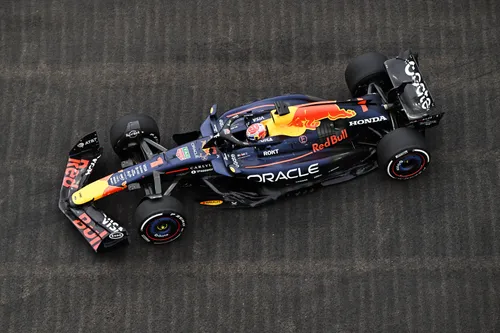
Max Verstappen in Singapore. Photo: Red Bull Content Pool
After a positive Friday, the pace shown during FP3 was even more reassuring for the team: Verstappen managed to top the timesheets, with 0.017 seconds of advantage over Oscar Piastri. After Friday, the RB21 also improved in the third sector, showing off that, despite the hot temperature, the drivers managed to keep the rear tyres in the right window for the whole lap.
This trend confirmed during qualifying: after being separated by just 10 thousands at the end of Q2, Verstappen and Russell battled against each other during Q3, with the Britain who had the edge over the 4-time World Champion. Despite this, the car felt strong once again, as Russell made the biggest difference in the first sector, with Verstappen stronger in the second and third.
During the usual post qualifying interviews, Verstappen praised the good job done on the car during these last few races: “The last three weekends now have been really, really nice. I mean, up until that point, we were always throwing the set-up left and right because it was just not working.
“Sometimes you had a weekend where it was okay, but now, the last three weekends, it's been solid. We've just been fine-tuning, and that's exactly what you want throughout the weekend. Of course, some layouts will be a bit better for us, some probably a bit more difficult, but the basis of the car is a lot more solid, and I think that is what you need.”
Read also
A good question mark for the RB21’s effective potential in hot conditions and slow speed corners was the race: due to the warm conditions, together with the many traction zones, the rear tyres are put under a lot of thermal stress with high fuel load around Marina Bay. For Red Bull it’d have been important to confirm the performance demonstrated on Saturday to certify their step forward.
Having nothing to lose, Verstappen decided to start the race on the soft tyres, to take advantage of the higher grip to try and have a go at Russell at the start. Moreover, the rain washed the track just a couple of hours before the start, making the asphalt “green” and with very low grip available. Using the softer compound with cooler conditions would have meant lower tyre wear, allowing Verstappen to run a similar strategy to those who used the medium.
The scenario, however, unfolded quite differently: since the asphalt was still quite slippery for the even starting spots, Verstappen hand’t enough grip to attack Russell in Turn 1. Moreover, the hot conditions made that tyre wear quite aggressive after the first 10/12 laps and, as the tyre wear down, the asphalt’s grip increased as a consequence.
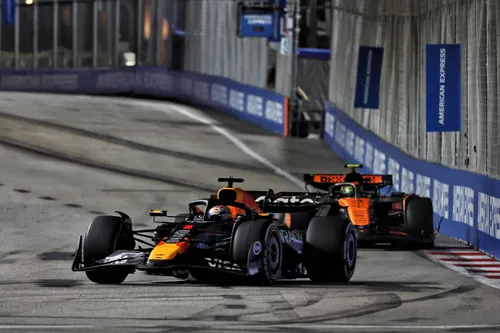
Lando Norris and Max Verstappen during the Singapore Grand Prix - Photo: Race Pictures
This led to a quicker consumption of the soft tyres, forcing Verstappen to make a lot of tyre management and end up to almost 10 seconds to Russell before the stop on lap 20, with the Britain pitting five laps later. For the rest of the race it was just tyre management for Verstappen, who also suffered some issues to the gear’s sync while downshifting.
Even though he was unable to attack Russell for the victory, the Singapore Grand Prix was an overall positive one for Red Bull, who proved to be competitive also on a less suitable layout to the RB21, confirming the different trend compared to the first half of the season.
Team Principal Laurent Mekies’ words after the race reassured that Verstappen and the RB21 could represent a big threat to McLaren also in the next few races: “It means that what we have unlocked is not only low downforce specific. So there have been a good flow of updates. There have been different ways to run the car and all together it seems that we have a competitive package on most tracks.”
Read also
Read more about:
Rumors
Popular on GPBlog

1
Verstappen hits back at Sky Sports reporter with a smile
5199 times read
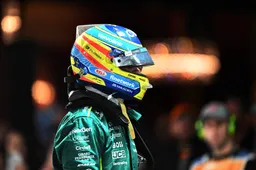
2
Alonso looking forward to part ways with AMR25 amid Horner rumors
1896 times read
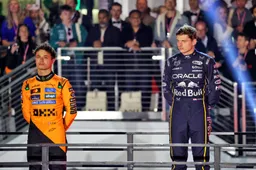
3
'Norris tried to play Verstappen at his game, but he doesn't know the rules'
1457 times read
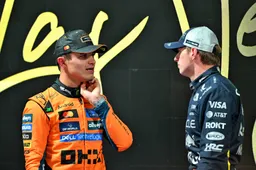
4
Verstappen and Red Bull may have triggered McLaren’s Vegas disqualification
1226 times read
Loading


